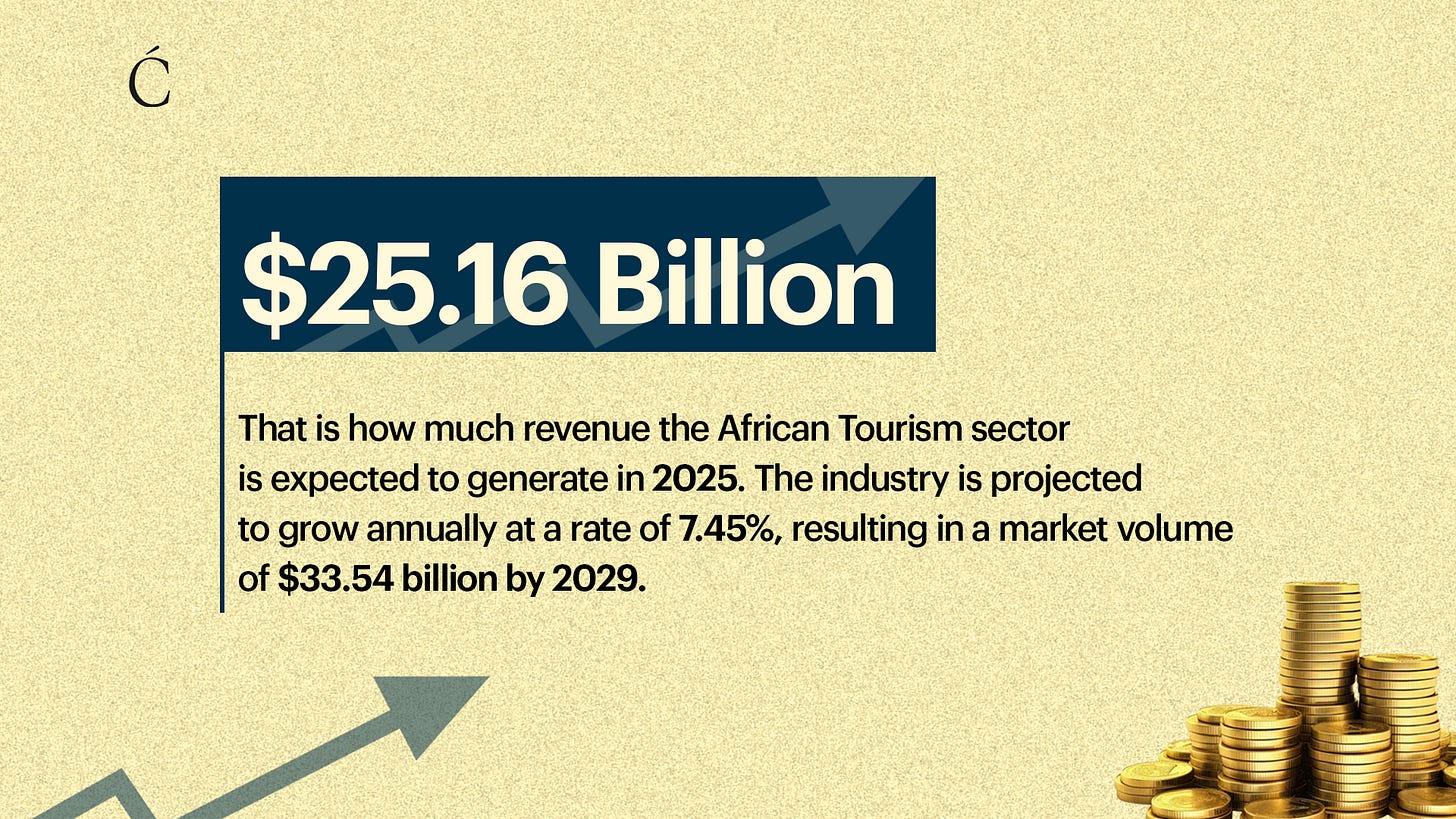The fashion blogger who built a $2 million/year clothing brand
Fisayo Longe has found success where many African creators have struggled, turning a successful blogging career into a fashion empire in the making.
Hello there!
We are now 15 weeks into January, but it will soon be over—thank goodness. So many of you have made promises and resolutions to do better this year. We hope sharing this newsletter with your friends and those you like is on that list. If it isn’t, please fix up.
In today’s digest, we discuss:
How Fisayo Longe went from fashion blogging to building a $2 million/year business
African tourism’s $4.5 million financing boost
Why Nigeria’s film industry is struggling to find global success
Center Spread 🗞️
From creator to business owner: Here’s Fisayo Longe’s success story
African creators often find it difficult to pivot from creating content to building product success around themselves, but Fisayo Longe has been able to do this. In an interview with the YouTube channel The Numbers Game, Longe shares her journey from blogger to fashion entrepreneur.
In 2012, she started a blog documenting her outfit choices and sharing her travel experience. This brought her recognition, thousands of social media followers, and the opportunity to work with brands such as Nike, Google, Universal Music Group, and Four Seasons Hotel. She also launched a course for new bloggers looking to grow their platforms. But in 2016, she went even further and launched a fashion brand.
With an £8,000 loan from her mother, Longe launched Kai Collective. She hoped her large social media following would help generate enough buzz to translate into sales. However, she found out that she was mistaken. Social media followers did not automatically mean a sold-out brand. “I can honestly say that Kai failed as soon as it launched,” she said. “I was not happy on launch day. I really thought, ‘How can we have 40,000 followers and get 23 orders?’”
The initial disappointment forced Longe to rethink her strategy. She concluded that her products lacked “enough uniqueness.” So she killed many of them and focused on a few, including her now famous “Gaia dress.” The dress brought in over $200,000 in its first year, roughly 50% of total company sales. Her background as a creator has helped the company invest in striking marketing and media campaigns. She has also received tremendous international media attention.
Last year, Kai Collective generated over $2 million. Talk about growth.
Purple Elephant Ventures raises $4.5 million
Last week, Nairobi-based venture studio Purple Elephant Ventures (PEV) raised $4.5 million in seed funding. Notable players included Clear Creek Investment and former Lastminute.com CEO Ian McCaig. The funds are expected to support PEV’s portfolio expansion and launch new ventures addressing critical challenges in African tourism.
This investment represents a significant vote of confidence in Africa’s tourism technology sector. The continent is in dire need of economic opportunities and the untapped potential of its natural and cultural heritage might be the way to go. This focus on tourism is understandable, considering that Africa’s creative industry is projected to be worth over $200 billion (over 4% of Africa’s GDP) by 2030 and the tourism sector represents 10% of that value.
PEV is already carving a niche. Since its launch in 2020, it has already backed five ventures, each addressing a specific issue and part of the tourism sector: Nomad Africa and JOIN Africa (both in discovery and information publishing), Kijani Supplies and PowerTrip (logistics and supplies procurement), and Zafari (operations management).
PEV’s work is part of a broader trend of venture capital investments in different aspects of the continent’s creative industry. In October 2024, Equitane (previously Africa Transformation and Industrialization Fund) led the $2 million funding round for the sector-focused publisher AMAKA Studio to expand its operations and establish its reach. Kenya’s HEVA Fund and Growth Africa are financing East African creative ventures in sectors like film, music, and gaming.
Crunch Time 📈
Why is Nigeria’s film industry struggling to find global success?
For the first time, Nigerian movies outsold Hollywood at the local box office, contributing to the record ₦11.5 billion revenue generated in 2024. This small victory for the industry prompts us to ask: Is it time for the industry to target the international market?
America’s Hollywood, India’s Bollywood, and South Korea’s Hallyuwood (a recent addition to the list) are some of the most successful movie industries globally. An important component of their success is their international appeal. In fact, on average, about 85% of the revenue of the top-grossing movies from these industries comes from foreign markets.
Though the Nigerian film industry has been designated the second largest in the world, it lacks such success stories. This is partly because, despite its high-volume production, local moviegoers have historically preferred big hits from other industries. But with this trend reversal, things might be falling into place. How can the industry capitalize on this development and enter foreign markets?
Read more about this in our latest Communiqué essay.
Curiosity Cabinet 🗄️
Some tips on how African tech companies can transform their communications in 2025.
Mark your calendars: the 2025 edition of the Africa Media Festival starts on February 26 in Nairobi.
This is what West Africa’s largest city (or metropolis) feels like as a local, according to Reuters’ Macdonald Dzirutwe.
Africa has no shortage of celebrated writers. The Guardian asks why local readers find it difficult to obtain their books.







